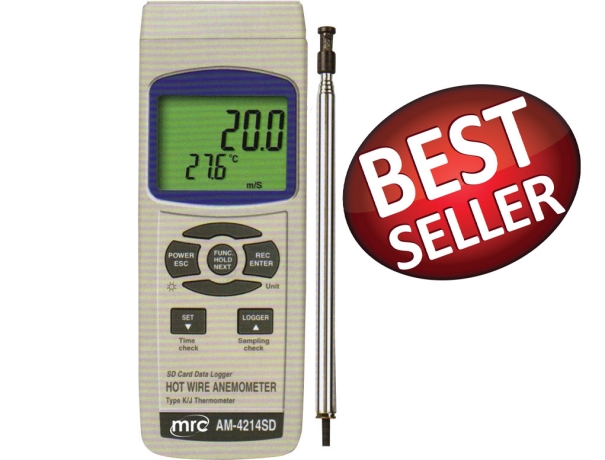A hot wire anemometer is a device used to measure the velocity of a fluid, usually air, by utilizing the cooling effect of the fluid flow on a heated wire. As the fluid flows past the wire, it carries away heat, causing a change in the wire's resistance. This change in resistance is then correlated to the fluid velocity, allowing for accurate measurements.
How Does a Hot Wire Anemometer Work?
Hot wire Anemometers operate on the principle of convective heat transfer. The heated wire acts as a temperature sensor, and as the fluid flows over it, it extracts heat from the wire, leading to a temperature drop. The wire's resistance changes in response to this temperature variation, which is then converted into an electrical signal. The magnitude of this signal is proportional to the fluid velocity, enabling the calculation of airflow speed.
Applications of Hot Wire Anemometers
Environmental Monitoring
Hot wire Anemometers find applications in environmental monitoring systems to measure air velocity, which is vital for studying air pollution dispersion, wind patterns, and ventilation efficiency in buildings.
HVAC Systems
Heating, Ventilation, and Air Conditioning (HVAC) systems utilize hot wire anemometers to assess airflow in ducts and HVAC equipment, ensuring optimal performance and energy efficiency.
Aerodynamics and Wind Tunnel Testing
In aerodynamics research, It help investigate airflow over aircraft wings, automotive components, and other aerodynamic surfaces. They are also essential tools in wind tunnel testing for various engineering applications.
Industrial and Laboratory Research
Used in industrial settings and research laboratories to study fluid mechanics, turbulence, and heat transfer phenomena.

Advantages of Hot Wire Anemometers
High Sensitivity and Accuracy
They offer high sensitivity, making them capable of measuring low airflow velocities accurately.
Fast Response Time
These anemometers provide real-time measurements with rapid response times, ideal for capturing fluctuations in airflow.
Suitable for Low Airflow Velocities
Unlike some other types, hot wire can measure extremely low airflow velocities, making them versatile in various applications.
Non-Intrusive Measurement
They are non-intrusive, meaning they do not obstruct the fluid flow during measurements, minimizing disturbances.
Choosing the Right Hot Wire Anemometer
Airflow Range
Consider the expected airflow range in your application to select an anemometer that covers the desired velocity spectrum.
Sensor Material
Choose a sensor material suitable for your specific measurement environment, considering factors like temperature and corrosive elements.
Data Logging and Connectivity
Opt for a model with data logging and connectivity features for convenient data retrieval and analysis.
Calibration and Maintenance
Regularly calibrate the hot wire anemometer and follow maintenance guidelines provided by the manufacturer to ensure accurate readings and prolong the device's lifespan.
Proper Usage and Maintenance Tips
Calibration and Regular Checks
Regularly calibrate the hot wire anemometer to maintain measurement accuracy and perform routine checks to identify any deviations.
Cleaning and Storage
Keep the sensor clean and store it in a safe environment to prevent damage and maintain the anemometer's performance.
Handling the Sensor Properly
Handle the hot wire anemometer with care, avoiding excessive force or mishandling that could lead to sensor damage.